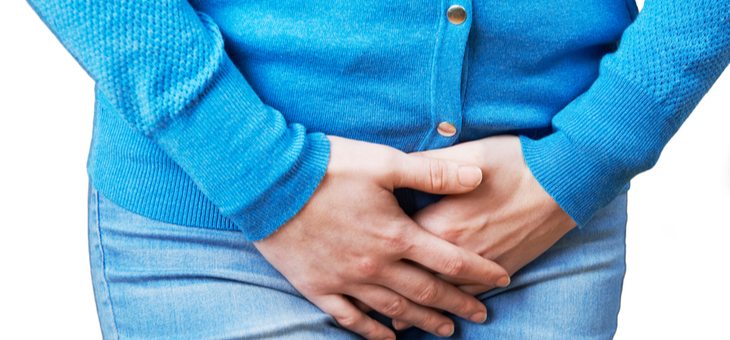Caravans, cruises, community groups, volunteering, hobbies, family time, lazy coffees and the morning newspaper – the sweet scent of the ‘golden years’ of retirement.
Most people have their own plan and dream as to what their retirement might look like, but all retirement dreams are likely to have two things in common: freedom and independence. Freedom to do what you want, when you want. No more clock watching, strict schedules, commuting, meetings, the list goes on.
But what if your wonderful retirement dreams suddenly turned into a nightmare – one filled with fear, isolation, frustration and anxiety? Such are the feelings expressed by many older Australians living with incontinence – one of the most common reasons people are admitted to residential aged care.
Every week in clinical practice, as a pelvic health physiotherapist, I interact with men and women of retirement age expressing their anguish and limitations as a result of bladder or bowel problems. They tell me about the fear of a bowel accident halfway around the golf course, the logistics of packing enough continence pads to last a three-week holiday, navigating the limitations of bladder capacity on flights and hoping there are enough toilet stops on Probus bus trips, just to name a few.
The good news is that most people can be cured or at least better manage the condition.
In World Continence Week, the Continence Foundation of Australia wants all Australians entering their retirement years to start thinking beyond their financial investments and invest in small lifestyle changes to prevent incontinence later in life.
Enter the ‘five healthy habits’ – the keys to unlocking your freedom from bladder and bowel issues threatening to derail the years you looked forward to for so long.
- Stay active: A little movement goes a long way – aim for 30 minutes of physical activity every day, whether it be gardening, walking to get the newspaper, playing with grandkids or a little bit of all of the above spread across the day.
- Eat well: Keep a good balance of dietary fibre in your life by including a wide range of fruit (two serves per day) and vegies (five serves per day), cereals and grains (five serves per day), legumes, seeds and nuts. This will promote good bowel function and help avoid constipation.
- Drink well: Ensure you drink enough to accompany your fibre intake, prioritising water and maintaining hydration to aid digestive health. Be aware that certain fluids may irritate the bladder, including caffeine, soft drinks and alcohol, so best to keep these to a minimum. The colour of your wee is a good place to start – a pale yellow ‘straw’ colour is a good sign, and if it’s darker, drink more water!
- Practise good toilet habits: Fallen into the trap of going ‘just in case’? Now is the time to stop. While it may seem like a good idea, frequent emptying of the bladder at lower volumes will lead to a reduced ability to hold reasonable amounts in the future. If you are doing this to minimise a bladder leakage issue, seek a continence professional for help.
- Locate and exercise your pelvic floor muscles: Well-functioning pelvic floor muscles are your ‘insurance’ against incontinence. More specifically, strong pelvic floor muscles are vital in both preventing and managing pelvic health conditions. A pelvic health physiotherapist can assess, teach and tailor an individualised exercise program targeting these muscles.
As a guide, you can attempt to squeeze your pelvic floor muscles by imagining ‘stopping the flow’ of urine, or trying to stop wind passing from the back passage. The length of each squeeze will depend on your individual strength – aim for three seconds as a start.
Following each squeeze, you should feel a complete relaxation or ‘letting go’ of the muscles. Ensure you rest for at least the equivalent time of your hold, longer if you need. Throughout each contraction, ensure you are not holding your breath or squeezing your butt or inner thigh muscles – the idea is that from the outside, no-one should know what you are up to down there.
Aim to repeat as many times as you can, up to a maximum of 12 squeezes. Ideally these exercises form part of a daily and lifelong routine, much the same as brushing your teeth.
There you have it – the beginnings of your confidence in continence, a different kind of retirement investment although no less valuable.
For further information and to seek help in improving your bladder or bowel control, phone the free and confidential National Continence Hotline on 1800 33 00 66 or go to continence.org.au.
Annabelle Citroenis a pelvic health physiotherapist, with extensive experience in the assessment and treatment of both women and men’s pelvic health issues. She completed her physiotherapy degree with honours at Melbourne University in 2007 and went on to complete postgraduate studies in pelvic floor physiotherapy and continence, musculoskeletal dysfunction and exercise for women.
Do you religiously do pelvic floor exercises? Have you noticed changes in your control as you’ve aged?
If you enjoy our content, don’t keep it to yourself. Share our free eNews with your friends and encourage them to sign up.
Related articles:
https://www.yourlifechoices.com.au/health/your-health/how-education-improves-memory
https://www.yourlifechoices.com.au/food-recipes/food/super-healthy-unusual-vegies
https://www.yourlifechoices.com.au/health/your-health/poor-sleep-linked-to-heart-disease

